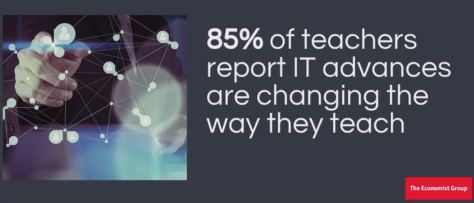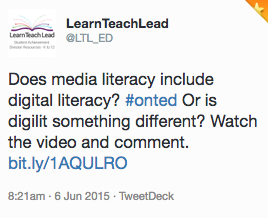This past week, I read a blog post by Jennifer Casa-Todd: Childrens’ Rights in a Digital World
It is based on this UNICEF publication: Childrens’ Rights in the Digital Age
This is the quote that first attracted my attention:
“… digital literacy across generations..”
I immediately thought of Ontario’s Renewed Vision for Education.
 “Our children, youth and adults will develop the skills and the knowledge that will lead them to become personally successful, economically productive and actively engaged citizens. They will become the motivated innovators, community builders, creative talent, skilled workers, entrepreneurs and leaders of tomorrow.”
“Our children, youth and adults will develop the skills and the knowledge that will lead them to become personally successful, economically productive and actively engaged citizens. They will become the motivated innovators, community builders, creative talent, skilled workers, entrepreneurs and leaders of tomorrow.”
http://www.edu.gov.on.ca/eng/about/renewedVision.pdf
When children attend a school, their experiences should not be limited by the knowledge and skills of the adults in the building. The educators, as digitally literate, connected professionals, should be able to bring the world to the children.
[Edit: Please see the comment below suggesting a rephrasing of the above statement –
My thinking: “The educators, as digitally literate, connected professionals, SHOULD BE ABLE TO FACILITATE THE CHILDREN’S LINKING THEMSELVES TO THE WORLD.”]
The school building can be a community hub for all to access the world outside the community. This concept of connected learning is well-explained in the short video below.
The importance of being part of a connected world is emphasized in a recent OECD Report – Connected Minds: Technology and Today’s Learners.

So how do we help adults improve their digital literacy?
Earlier this week, HWDSB Grade 1 teacher Aviva Dunsiger led a discussion in the OSSEMOOC session demonstrating how she empowers the parents of her students through the use of technology.
Aviva uses technology to share her students’ learning throughout the day, and provides parents with simple suggestions for how the learning can be extended at home.

During the recent Google Education On Air Panel Discussion (14:00), Zoe Tabary (from The Economist, Intelligence Unit) reminded us that there is no “extra” time in the school day to add digital literacy. Digital Literacy learning must be integrated into the current curriculum (Sean Rush, Junior Achievement Worldwide).
The recent report (Driving the Skills Agenda) from The Economist states that only 44% of the students surveyed (ages 18-25) feel that schools are providing them with the skills they need to enter the workplace, and while teachers report that technology is changing the way they teach, 77% of students report that schools are not effective in using technology for instruction.

How, then, does Digital Literacy for all become an integral part of learning in our schools?
If we are educating learners in our communities to be full participants in society, digital literacy must become a priority.

Further Resources:
Critical Literacy: Is the Notion of Traditional Reading and Writing Enough? (Langwitches Blog)
Literacy Redefined (Jennifer Casa-Todd)
Driving the Skills Agenda (The Economist)









